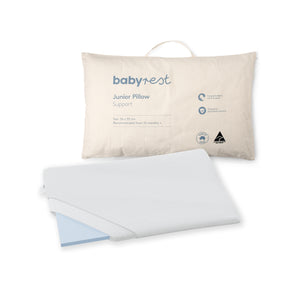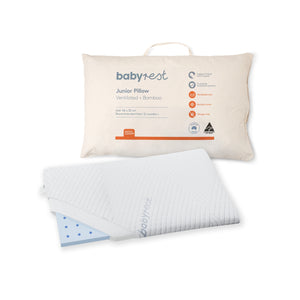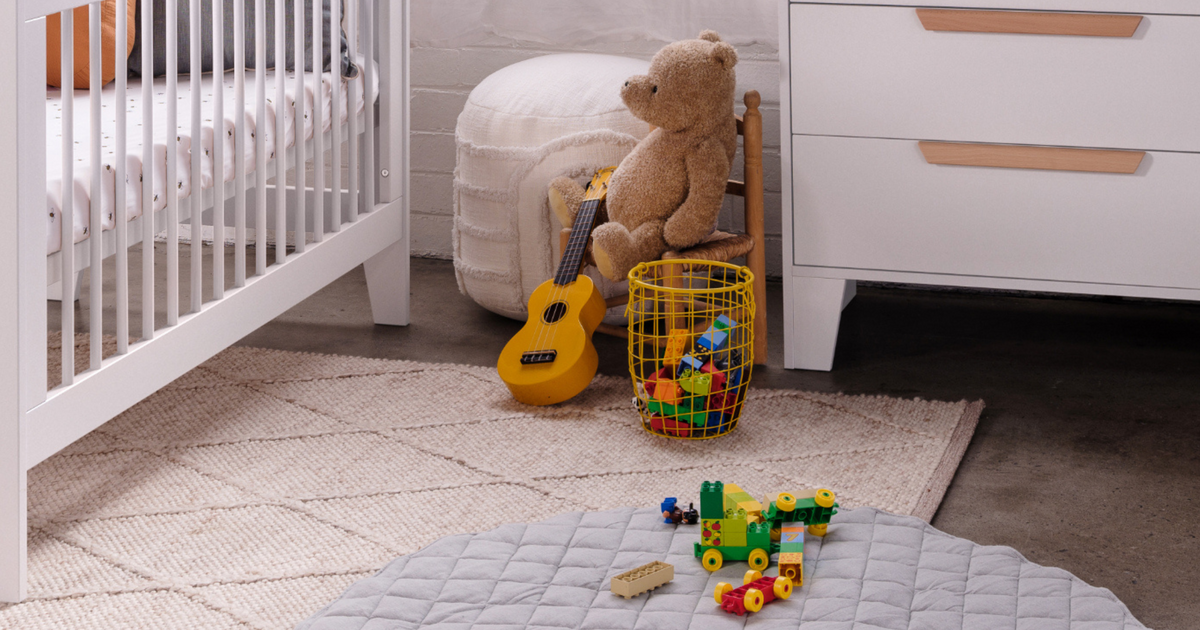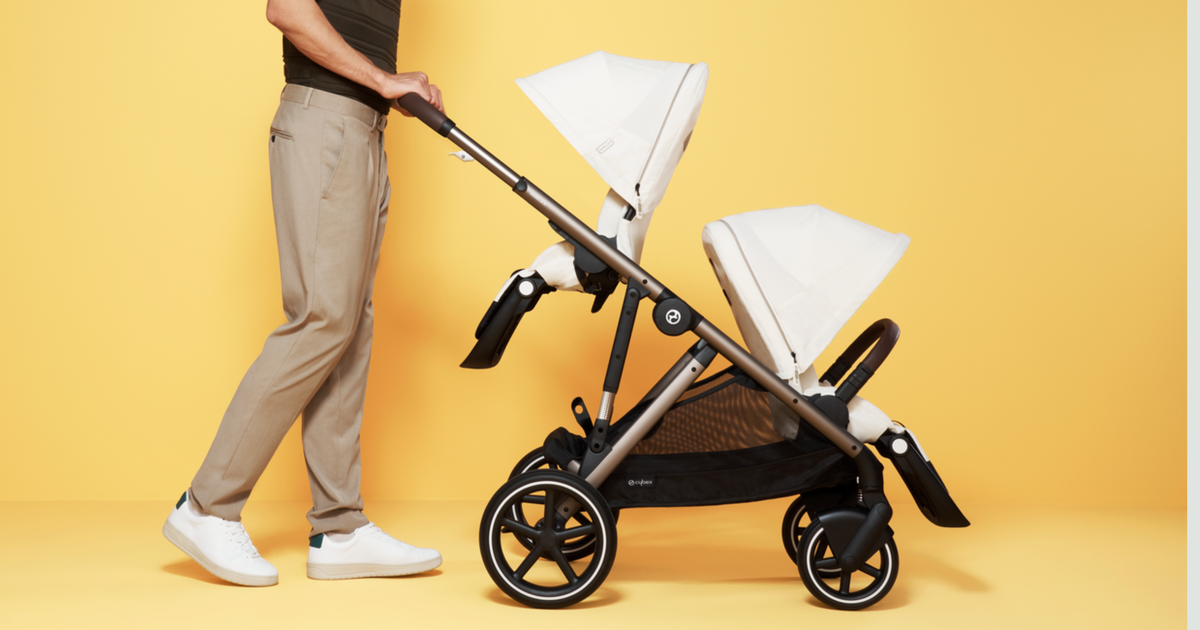Signs it’s time to replace your toddler’s pillow
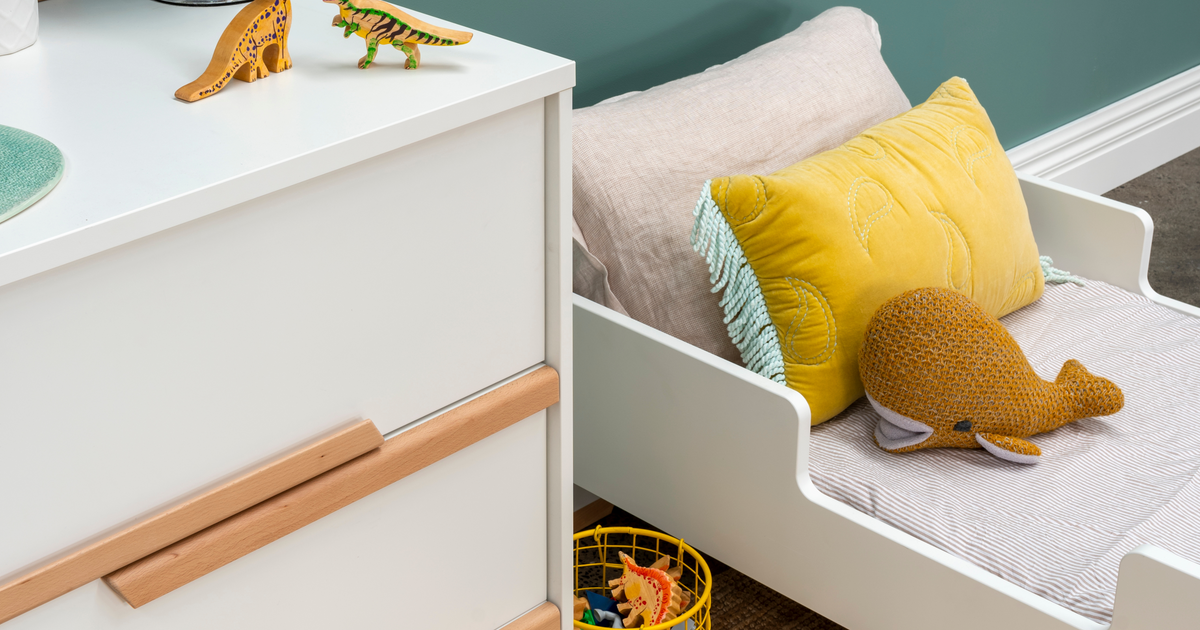
Do junior pillows last as long as adult pillows? Is it ok to reuse for my next child? What are the signs it’s time to be replaced? Does it have a use-by date? Can an old pillow give my child allergies?
If these are questions you’ve been having, you’ve come to the right place!
At Anstel, we know a thing or two about safe, quality sleep for babies. In fact, that’s why we’ve spent the last 40+ years developing a range of Babyrest junior pillows using only the highest quality materials available for your little ones.
It all began when an Aussie mum developed the concept of a flat junior pillow that would offer the right amount of head and neck support for little ones. After being recommended by local paediatricians, the pillow became a staple in many nurseries. Many years and continual developments later, and our pillows are still the pillow of choice for Aussie babies and toddlers today.
With that in mind, join us as we discuss the best way to care for your junior pillows and identify the signs that it’s time to replace them.
Dust mites, mould and other nasties: Why it’s good to replace pillows regularly
As it turns out, it’s not just toothbrushes we don’t replace as often as we should... Pillows are notorious for collecting everything from sweat to dead skin cells and even pet dander, but did you know they can also play host to dust mites and mould? That’s not just gross, but also a health concern as dust mites can exacerbate health issues such as asthma and eczema, while mould can affect our lungs.
Your child presses their face against their pillow every naptime and bedtime. This means ensuring your child’s pillow is both clean and ergonomically sound is an important part of creating a safe sleeping environment for them.
According to the Sleep Foundation (2022), toddlers need around 11 to 14 hours of sleep every day. That’s a lot of time in bed! Ensuring their bedding is as hygienic as possible not only contributes to a safe sleep, but can also increase their comfort while they sleep.
Signs it’s time to bin your child’s pillow
Did you know that many pillows come with a use-by-date? That’s right, even ‘adult’ pillows.
While the suggested length of use is determined by the materials used, most experts agree that you should be replacing your pillows every year to two years. This roughly aligns with the time toddlers would probably need an upgrade anyway, but also means it’s best if you don’t reuse pillows between siblings, unless you take great care in keeping them clean.
Do any of the below questions apply to your toddler’s pillows? It may be time to replace them with fresh ones:
-
Has the pillow gone lumpy or lost its shape?
If you fold the pillow over and it stays flopped down instead of springing back to shape, it may no longer provide the support your child’s neck and spine needs. -
Is the pillow stained?
Whether from night sweats, drool or old milk spills, the pillow may be harbouring uninvited bacteria or even mould. -
Does it have a strange smell?
A musky smell is a good sign that bacteria is growing. Inhaling that all night won’t make for the best dreams! -
Did you last wash it more than 18 months ago?
It’s time to go. -
Do your child’s allergies flare up at night?
They may have a sensitivity to anything from pet dander to dust mites in the pillow. Try switching with a different one to see if it makes a difference. If it doesn’t, it’s time to see the doctor. -
Does your child’s skin seem irritated when they wake up in the mornings?
Bacteria hiding in the pillow might be to blame. Again, see if switching the pillow helps. If not, pop in to see your GP or paediatrician.
Prolonging your pillow’s lifespan
If replacing pillows every year or two sounds excessive, don’t worry – there are ways you can keep your pillows fresh and hygienic for longer.
In addition to following the care instructions on your pillow’s labels, we recommend you do the following:
-
Use a breathable pillowcase
Pillowcases protect both the pillow and your little one. Make sure to wash it at least once a week. We recommend you choose either linen, 100% cotton or a soft, breathable bamboo cover. -
Vacuum the pillow
A quick vacuum can help reduce any dust collecting in the pillow, just be careful not to damage the pillow’s shape. -
Wash the pillow every few months
While some down or synthetic-filled pillows can go in the washing machine and dryer, foam and latex pillows should be gently hand washed in cold, soapy water, and left to air dry on a flat surface. Always make sure to follow the pillow’s care instructions for the best outcome. -
Choose a treated foam core
The Babyrest junior pillows in ventilated and support offer a PermaGuard® treated foam core to help protect your little one from allergy-related microbes, dust mites and bacteria. -
Ventilate the room
Regularly opening a window to let a breeze through your child’s room helps filter the air and freshen bedding, including pillows. Popping the pillow in the sunshine for a few hours can also help kill bacteria. -
Choose ventilated pillows
Offering maximum airflow, Babyrest has two ventilated junior pillow options available that help maintain freshness and stay cleaner for longer. -
Invest in quality
You get what you pay for; quality pillows are expertly designed to last longer and are composed of premium materials that will help them stay 'like new’ far longer than many others. They also tend to be gentler on your little one’s skin, offer special features like PermaGuard® protection, and have a smaller footprint than cheap, mass-produced alternatives.
However, it’s important to note that while repeatedly washing your pillows will certainly keep them clean, it will eventually erode their structure, at which point you will need to replace them for best spinal support.
Why choose Babyrest Junior pillows?
Babyrest has spent the last 40 years perfecting the ultimate junior pillow for maximum support, ventilation, protection from germs, comfort and even sustainability.
The Babyrest Junior pillow range is made using only quality materials, making them hypoallergenic, washable and are designed to last longer than most on the market.
Did we mention that more than 80% of our bedding products are made right here in Australia by Aussie parents and grandparents? Read more about the benefits of choosing Australian made.
Choose Babyrest, the trusted brand of sleep essentials for Aussie families. Discover our range of pillows below:
- Junior Pillow – Ventilated
- Junior Pillow – Ventilated + Bamboo
- Junior Pillow – Support
- Junior Pillow - Latex
Anstel has a team of passionate expert representatives. Get in touch with us today with any questions about junior pillows or bedding essentials.
Further reading:
- Pillows for children under 4 years: What you need to know
- Babyrest Junior Pillow comparison: How to choose the right pillow for your child
- How we make baby and toddler mattresses in Melbourne
- Are expensive baby and toddler mattresses worth it?
- Why choose Australian made?
- How to know when your toddler is ready for a junior bed
